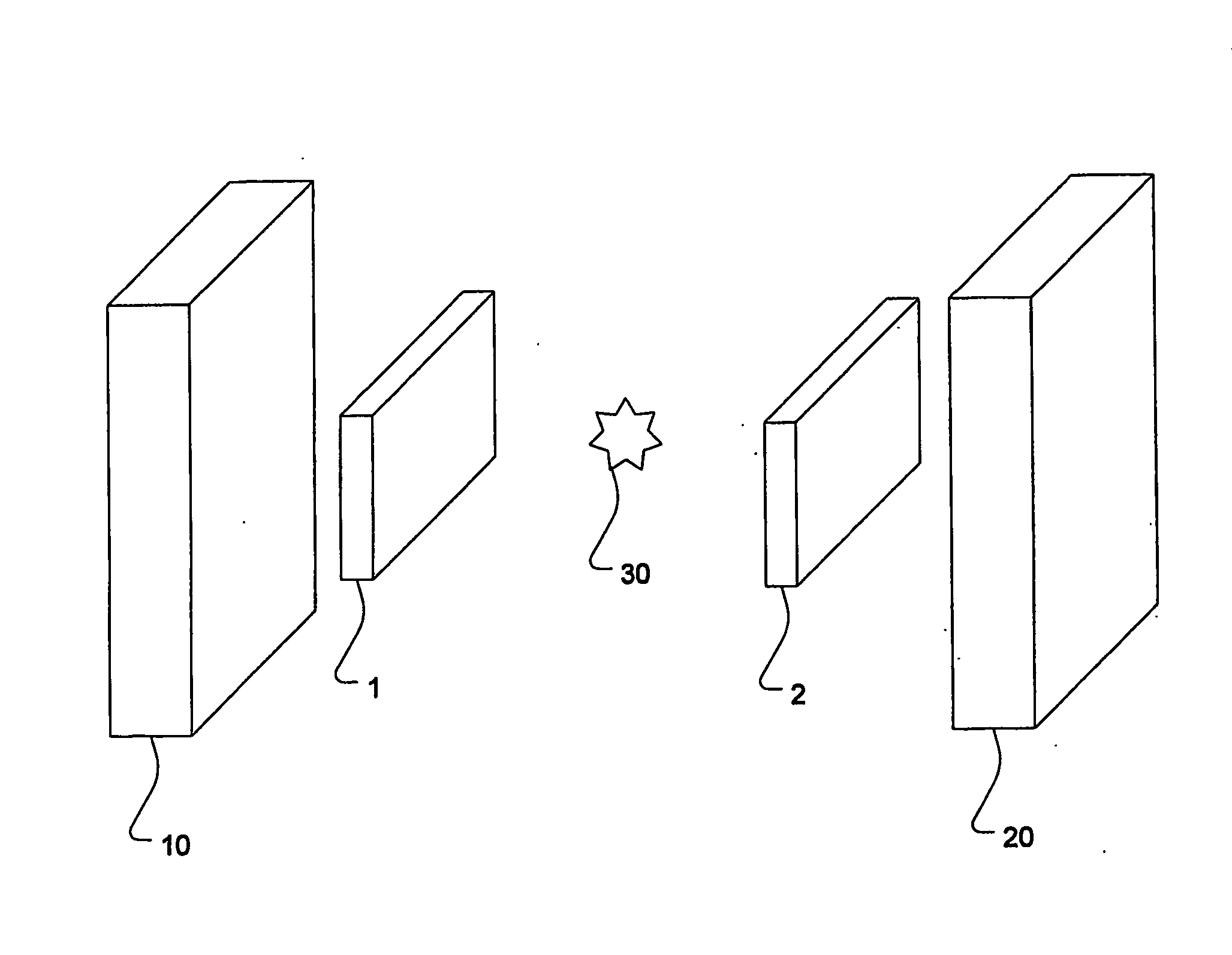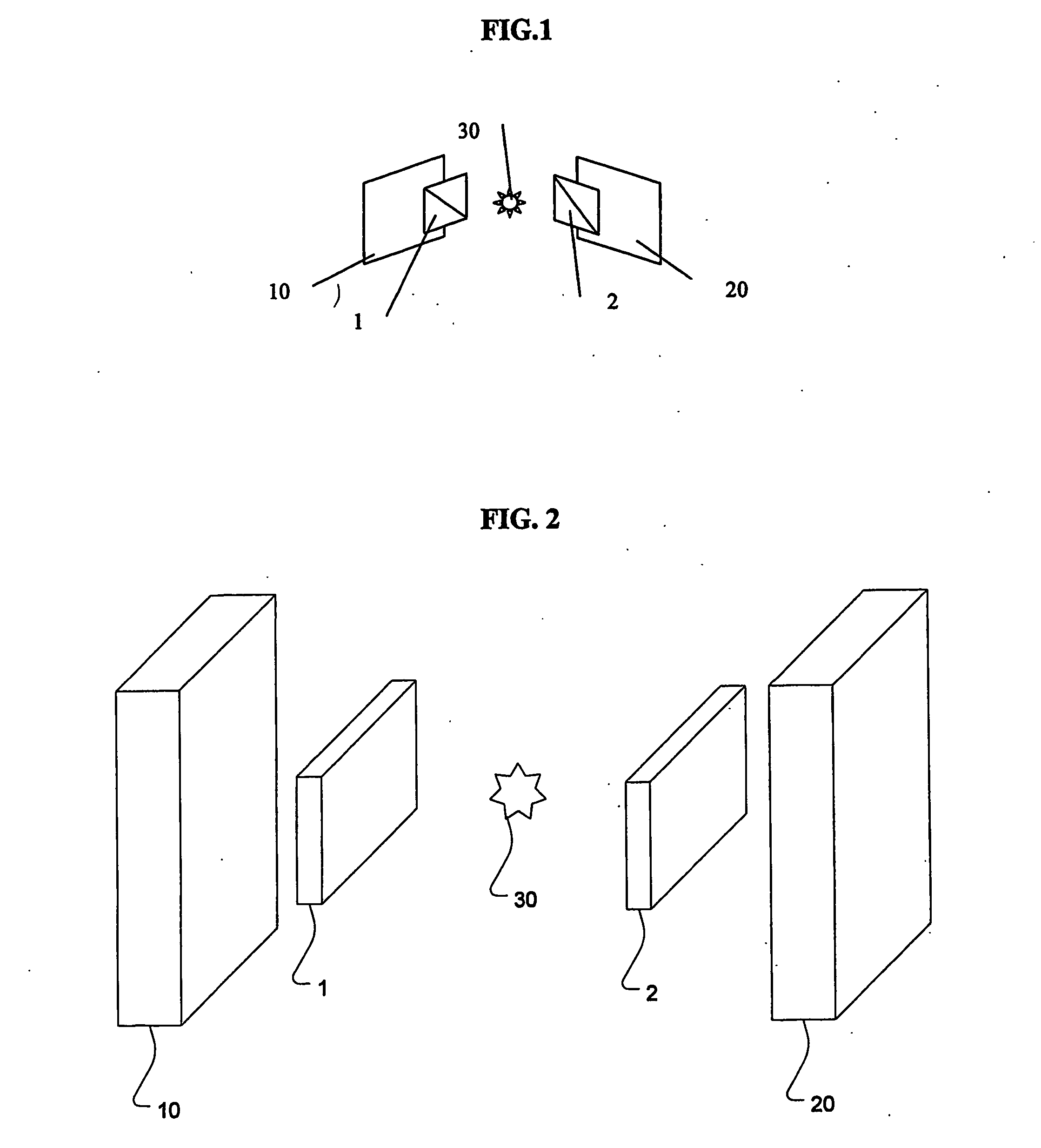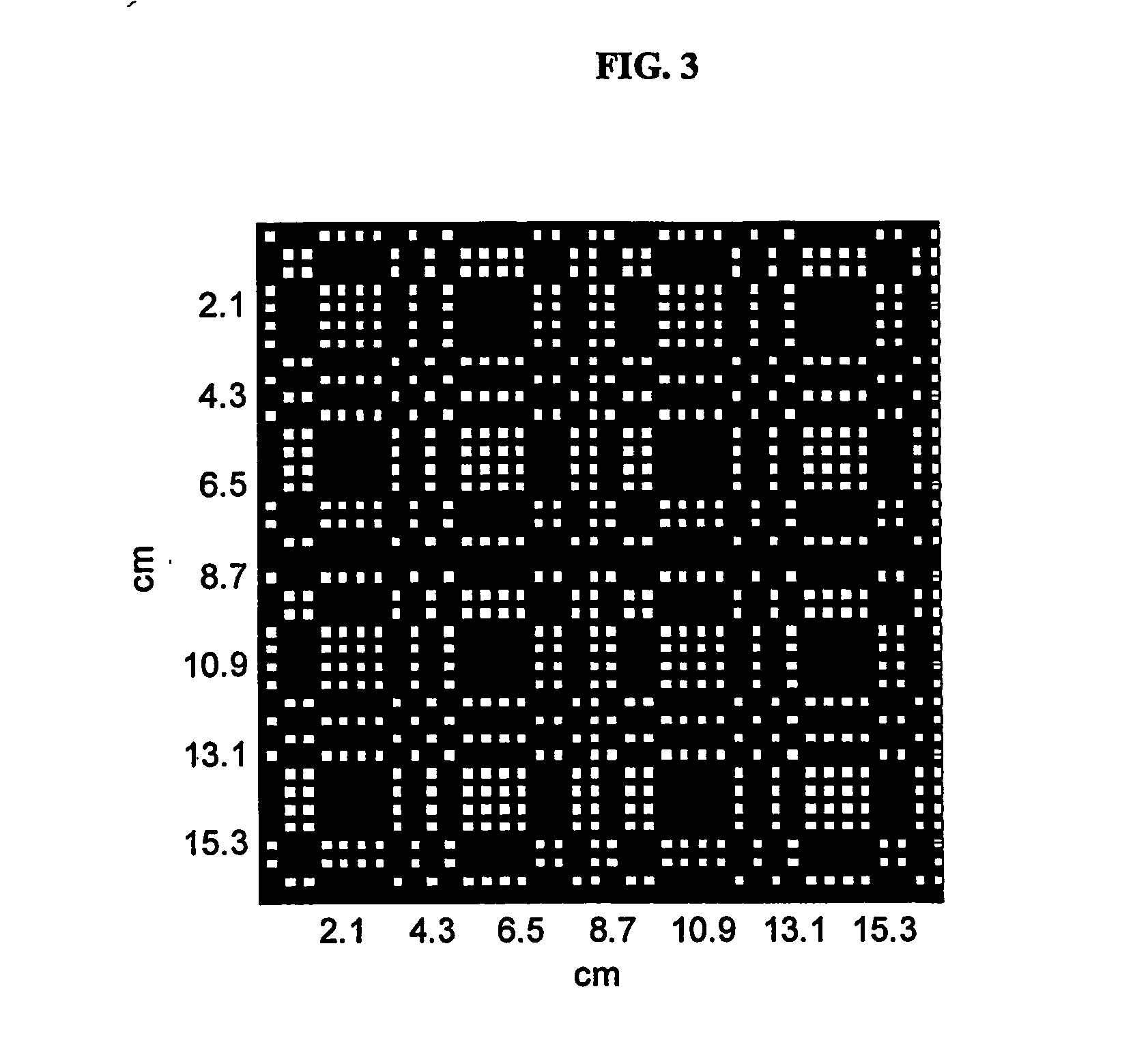Coded aperture imager
a coded aperture and imager technology, applied in the field of molecular imaging, can solve the problems of not disclosing the use of more than one detector to detect signals passing through at least two masks simultaneously, corrupted images, etc., and achieve the effect of minimizing artifacts
- Summary
- Abstract
- Description
- Claims
- Application Information
AI Technical Summary
Benefits of technology
Problems solved by technology
Method used
Image
Examples
examples
[0047] A double-head clinical gamma cameras were used in this experiment. The coded aperture was used as shown in FIG. 3 utilizing the mask pattern NTHT MURA, 38×38, mosaicked, pattern centered, anti-symmetric about center made from Kulite 1750 tungsten alloy by drilling. The mask had the following parameters:
[0048] Open fraction (ρ)—0.125;
[0049] Mask pixel size—2.2 mm;
[0050] Resolution (FoV=11.9 cm): geometric—2.2 mm and system—3.1 mm;
[0051] Magnification—3.67;
[0052] Thickness—1 mm; and
[0053] Attenuation (at 140 keV)—0.969.
[0054] To test the method, a disk source was prepared. Data were acquired on both heads with the following parameters:99 mTc in film case:18.5 MBq; 5 s / frame; and 60 frames. The source was moved manually. Adding the mask and anti-mask data removed near-field artifacts.
[0055] For point sources, coded apertures reach the same SNR in a time shorter than pinholes by a factor equal to the number of pinholes used (in this case 180). It is possible to image rela...
PUM
 Login to View More
Login to View More Abstract
Description
Claims
Application Information
 Login to View More
Login to View More - R&D
- Intellectual Property
- Life Sciences
- Materials
- Tech Scout
- Unparalleled Data Quality
- Higher Quality Content
- 60% Fewer Hallucinations
Browse by: Latest US Patents, China's latest patents, Technical Efficacy Thesaurus, Application Domain, Technology Topic, Popular Technical Reports.
© 2025 PatSnap. All rights reserved.Legal|Privacy policy|Modern Slavery Act Transparency Statement|Sitemap|About US| Contact US: help@patsnap.com



